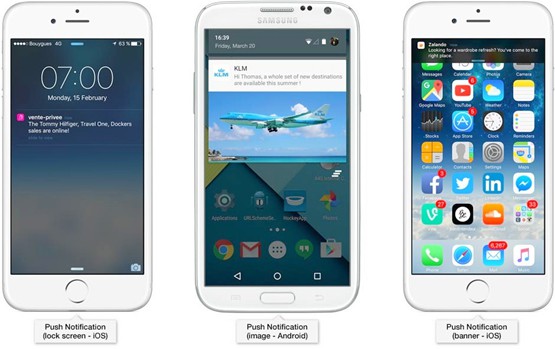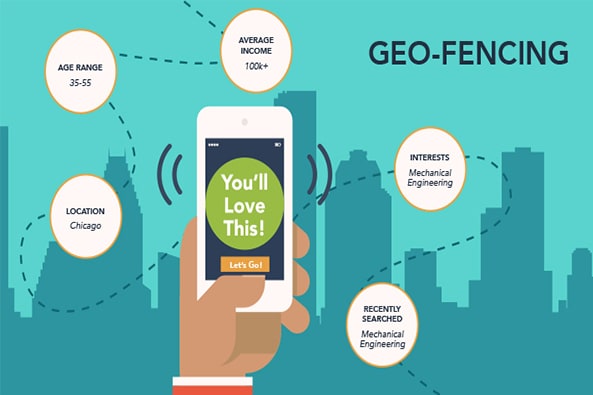Experience the future of mobile marketing with geofencing, a revolutionary technique that empowers companies to precisely target consumers within a specified geographic radius. In today’s digital era, all modern smartphones are equipped with GPS capabilities, enabling the transmission of geo-precise signals that are not only accurate but also time-sensitive.
The Power of Geofencing:
- Targeted Precision: Geofencing allows you to pinpoint and engage with your desired audience within a defined geographic area, delivering highly relevant messages and offers.
- Consumer Opt-In: Consumers have the option to choose whether to opt in or out of allowing companies access to this information. Once opted in, these signals operate passively on the consumer’s device.
Our Expertise:
As a Geo Fencing Advertising Company in Dubai, UAE, we are at the forefront of this transformative mobile marketing technique. Our team specializes in crafting effective geofencing campaigns that ensure your message reaches the right audience at the right time.
Ready to harness the power of geofencing for your business? Contact us today and embark on a journey of precise targeting and marketing excellence.

Geo-fencing and geo-targeting are location-based services, meaning they use data related to where a device is physically located. Common examples include cellular data, Wi-Fi service, global positioning (GPS), satellite information and radio frequency identification (RFID). A geo-fence can be set up around any geographical region; once the device enters or leaves this “location boundary”, the device’s location information can be used to trigger a programmed action such as push notifications, SMS messages, alerts or targeted advertising. Geofencing and geotargeting are commonly used for online advertising/marketing as well as other tracking and location services.
A geofence is a virtual perimeter around a specific place, such as a building or area of interest. Some geofences are set up to monitor activity in certain areas, sending alerts when anyone enters or leaves that area. Businesses can use geofencing to monitor employees on or off the work site, automate time cards, or to maintain awareness of company property.

Geofencing is a powerful tool in digital marketing and location-based advertising. Location-based geofencing allows businesses to limit their marketing efforts to a smaller audience in a more specific area than would be possible through city or zip code targeting.
HOW DOES GEOFENCING AND GEO TARGETING ACTUALLY WORK IN MARKETING AND ADVERTISING?
A geofence (also known as a virtual perimeter) is an area designated around a specific location. A geofence can be drawn on Google Maps as a circle or square, for example, with GPS coordinates indicating the center of that boundary. When someone enters that area via his device, an alert can be triggered as specified by the targeting settings of an online marketing campaign or location service. Some software applications using geofencing technology even allow development using modern on-screen graphical interfaces (GUIs), so that more precise boundaries can be established by less sophisticated users.

Geofences are defined most commonly within code (web/mobile). However, users must first opt-in to app-specific location services for the geofence to work. Retailers can use this functionality to push alerts to customers who have downloaded their mobile app and also opted-in to location services.
Geofencing is a location-based software capability that allows you to define geographical boundaries around physical locations and then trigger certain actions when your mobile device enters or exits that area. Some lifestyle apps allow you to set up geofence functions that will automatically generate reminders if you enter or exit a specific location. Home automation services, such as those used for home security and energy management, can be programmed to automatically control Wi-Fi connected devices from anywhere with an Internet connection using smartphone apps. As the capabilities of geofencing increase and become more common, these automated functions are likely to become increasingly popular for home owners.
Geofencing is not just used in mobile apps. It has been used to control and track vehicles, containers and livestock, among other uses. Nearly every drone being made today is pre-programmed to accommodate geofencing; this technology may set up boundaries around airports, open-air venues and even the White House. The FAA has established barriers capable of stopping a drone in mid-air, while other triggers send warning messages to the user.
Geofencing Advertising FAQS
If you have questions about geofencing, you’ve come to the right place! We’ve taken the most frequently asked questions about geofencing and answered them for you in this post.
Geofencing enables advertisers to target people interested in their business and offers by creating a virtual perimeter around a real-world location.
Hundreds of companies use geofencing to reach people who are in or near their stores. Brick-and-mortar restaurants and online businesses also use geofencing; some examples include the History Channel, North Face, and BMW.
Geofencing is a marketing tactic that can help you reach nearby customers. When they’re near your business or a competitor’s, they can be engaged with content, loyalty programs and other actions. Geofencing has numerous benefits, including:
– Getting to know your audience better: Geofencing allows you to collect information about your audience as they enter and exit your geofence. This allows you to better understand who your audience is, making it easier to create more relevant ads.
– Reaching your audience at critical points:Geofencing enables you to reach customers at critical points in their shopping experience. You can drive them into your brick-and-mortar store and get them to buy your products.
– Reaching your audience in real-time: Geofencing can enable you to make quick and actionable attempts to get prospects to engage with your business. A geofence is an invisible digital perimeter around a location, such as a business. When a prospect approaches the perimeter, they receive a push notification that can take them directly to your website or another part of your business’s website.
One of the most common questions associated with geofencing is “how does it work?” Geofencing is a technology that uses GPS or Wi-Fi signals to create an invisible perimeter around a designated area. The first step in setting up your geofence is to select your virtual fence’s shape, size, and trigger action. Your fence can be circular with a radius or polygonal, depending on how large of an area you want to monitor. You can also choose whether you want your fence to react when someone enters or exits the area, or both.
– Cellular triangulation
– Wi-Fi triangulation
– GPS
Cellular and Wi-Fi triangulation are the most recommended options for proximity campaigns because they do not drain a user’s battery as much as other methods. Once you create a geofence, members of your audience will be added to it when they enter the fence. Once they are within your targeted area, you can deliver an ad or notification to them and get them to visit your business.
You can do geofencing through:
– In-app notifications
– Social media ads
– Search ads
– Display ads
You can deliver these ads or notifications when someone enters, exits, or stays within your geofence.
Note: To enable location services, people must choose Settings | Privacy | Location Services and then turn on Location Services for your app. This step requires two actions, which can be tricky for many people to complete.
You can use geofencing in several scenarios. The most common use of geofencing is to direct customers to a business or store. You can create a geofence around your business, and then share an offer with anyone who enters that territory. For example, you can give away free samples or discounts to those who enter the area around your store, resulting in more foot traffic through your doors and higher sales for your company.
Another option is to create a geofence around the location of your competition and drive people toward your own business instead.
The third common use of geofencing technology is at events or trade shows related to your industry. This tactic can help bring in more foot traffic than normal to whatever event you’re attending, resulting in more exposure for yourself and greater returns on investment (ROI).
Lastly, you can use “hotspots” as targets for geofence campaigns. For example, if you wanted to increase awareness among college students, you could create a geofence that encompasses their school or campus and show them an offer when they get close enough to it.
When you peruse the geofencing FAQs, you will likely wonder what geofencing can do for your business. You can use this technology in a number of ways to help your business grow, including:
– Increasing foot traffic to your business to earn more customers
– Increasing brand awareness to earn more future sales
– Increasing engagement with your app to build brand loyalty
– Increasing knowledge about your audience to target them better
Furthermore, geofencing can be used to lure customers from competing businesses. You can establish a geofence around your competitors, and entice customers to come to your business by offering them a special deal.
Geofencing is a tool used to target customers using their proximity to your business. When determining the size of your geofence, you should consider your audience and how they will reach you.
For example, if you put up a geofence around your business, you must consider if people walk or drive there.
As a rule of thumb, when targeting foot traffic in urban areas, a four-to-five-minute walk works best for defining your radius. If you are targeting customers who drive rather than walk, it’s best to keep them within a four-to-five-minute drive of your business.
The last (and perhaps most important) of the geofencing FAQs is how much does geofencing cost? Pricing depends on how many zones you wish to track and how often you want to be notified when a customer enters or exits the zone.





